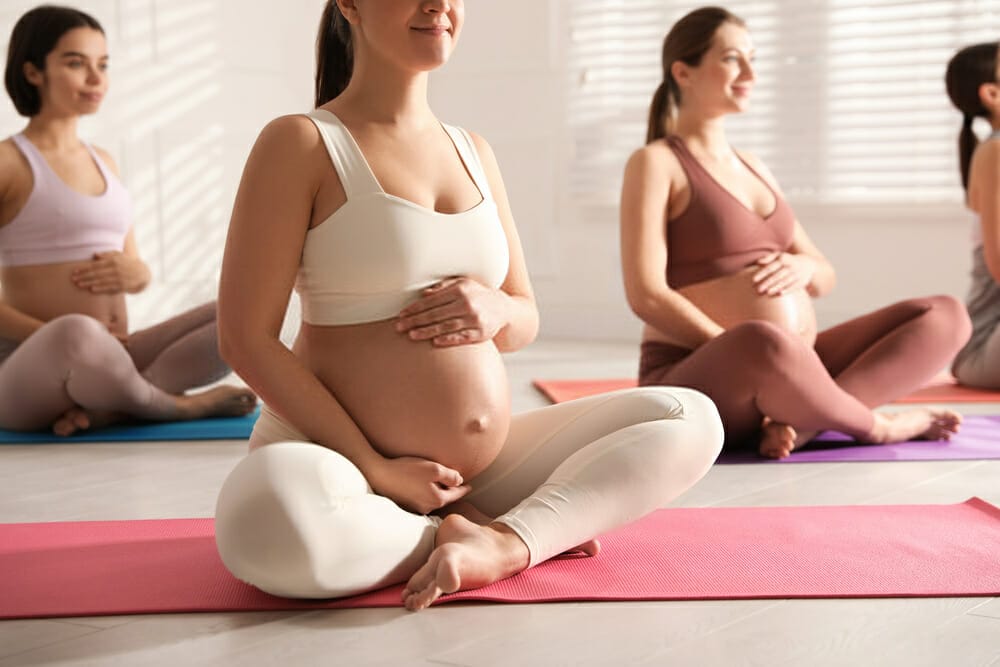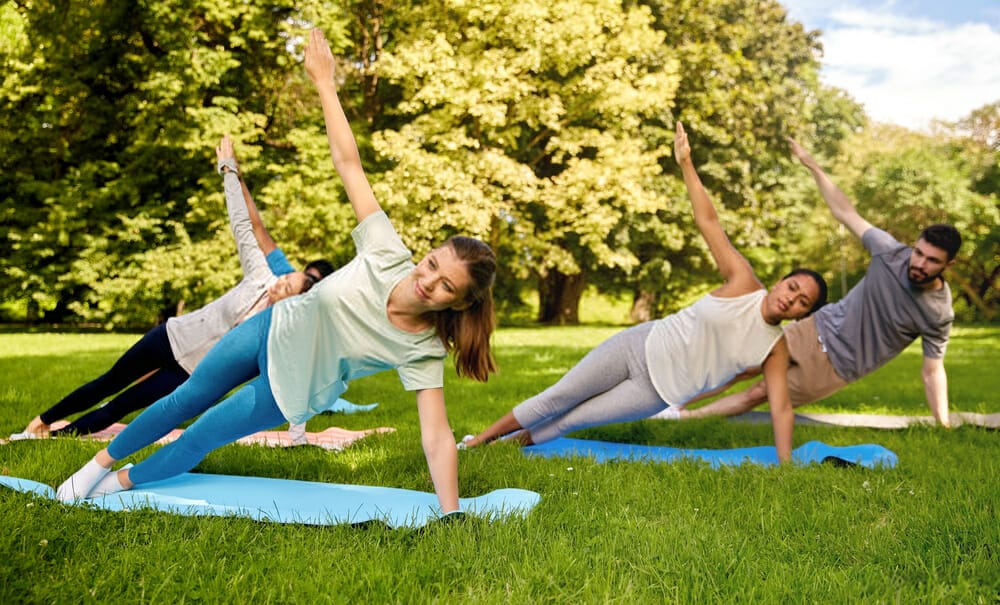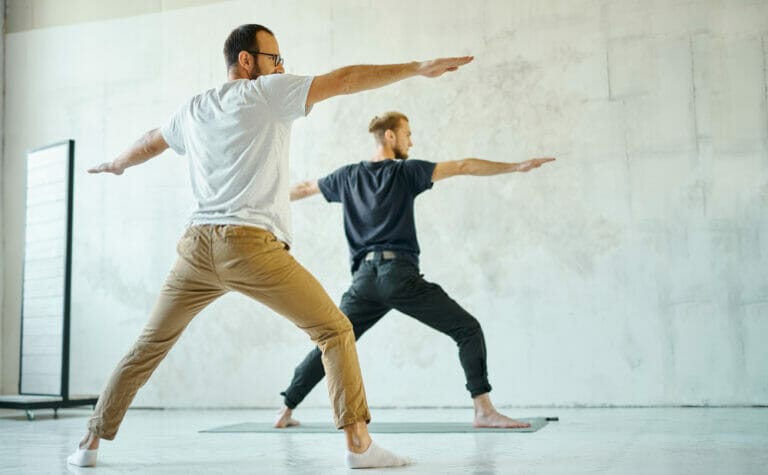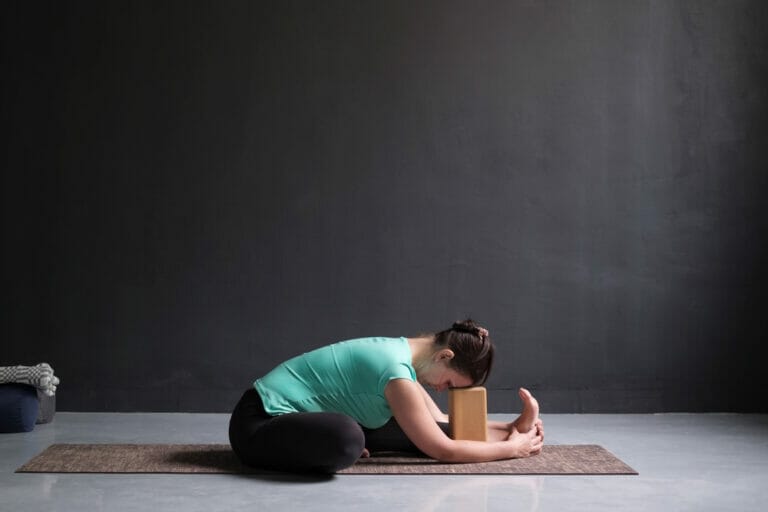Myths About Yoga (Debunked)
While many people believe that yoga is just a “feel-good” practice, regular yoga has many mental and physical benefits.
For example, yoga improves flexibility, reduces stress and depression, and helps with chronic pain.
In addition, yoga benefits the mind and body by promoting a positive attitude and improving mental clarity.
Yoga can also reduce blood pressure, improve balance, provide a sense of control over one’s life, and help support a healthy lifestyle.
Several misconceptions have accumulated around the practice; one common assumption is that yoga requires much time and effort.
In reality, some types of yoga only take a few minutes during the day, and you can save more time by using more effective techniques such as breathing exercises.
Although yoga is a well-known ancient discipline, some individuals generate myths and misconceptions about it. As a result, it may cause people to be scared of or avoid practising yoga for many reasons.
We’ve compiled a list of yoga myths that you should quit believing in to prevent such misunderstandings.
Let’s get started!
Myth #1: Yoga is only for women
Many people believe that yoga is a practice that was initially designed for women. Unfortunately, this misconception is widely spread throughout the world, and it even occurs at many yoga retreats where some people assume that all classes are for women only.

Fact: Practicing yoga has been common in both men and women since ancient times. The word “Yoga” originated from the Sanskrit words yuj, which means “to join,” and jñāna, which means “wisdom.”
Although yoga can be practised by any person regardless of their gender, the type of yoga practised will depend on their gender, age, and physical condition.
Myth #2: Yoga is dangerous
Other people think that yoga is dangerous because they hear about many injuries and health problems caused by it. The truth is, there are no reported cases of anyone dying from practising yoga.
In addition, many physical practices such as running and jogging cause more injuries than practising yoga.
Fact: Yoga does not cause any health or injury problems when you do it correctly. Yoga is a mind-body practise that can be a safe and effective technique for young and older people.
It has proven that practising yoga in a well-rounded way can improve your posture, strength, fitness level, flexibility, balance, and coordination.
Myth #3: Pregnant women should refrain from practising yoga
Many people think that pregnant women should not practice yoga because it could harm the fetus. However, the truth is that yoga does not pose any threat to a fetus as long as it is practised safely and carefully.

Fact: Yoga consistently benefits pregnant women by improving their flexibility and flexibility. It can be helpful for those who are trying to deliver and give birth to a healthy baby.
Myth #4: Yoga is only for vegans
Yoga does not impose or demand anything from those who do it. However, several guidelines can assist in promoting improvement and boost the efficacy of practice.
First, you should avoid opiates and intoxicating drugs since they reduce consciousness and use a lot of energy. Despite this, yoga practitioners can consume or avoid meat of their own volition.
Fact: Yoga is a form of meditation, and it does not depend on the practitioner’s choices.
Myth #5: You can learn yoga from a book
Book-based yoga has its merits, but there are many benefits to learning yoga by practising it with your body.

Learning techniques and skills through books can be helpful, but it may not provide you with the same benefits as practising them in real life.
Fact: Yoga is an art that has evolved over the centuries. However, it can be practised in various forms depending on the instructor’s training and experience.
Myth #6: Yoga needs expensive accessories
Yoga does not need any accessories or extra tools to practice. You don’t need to have expensive equipment or accessories which are often associated with yoga.
Fact: Although you can purchase yoga mats, yoga blocks, and even special bras, you don’t necessarily need them to practice yoga. Some essential items found around the house are usually enough for you to perform some basic exercises.
Myth #7: You have to be flexible to do yoga
Yoga practice does not need flexibility. An essential aspect of yoga is being aware of and experiencing your body at all times.
Therefore, it is more critical to focus on your inner sensations and determine which postures are most beneficial to you specifically.
Fact: Yoga is a practice that focuses on flexibility, but it also stresses deep breathing. When you are not focusing on your muscles, your mind will focus more on expelling stress.
Myth #8: You have to do yoga for hours every day
Yoga does not require an entire day’s worth of practice to reap its benefits. However, practising too much can have negative consequences. If you are feeling overwhelmed or tense, it is wise to limit your time practising yoga.
Fact: Yoga is a practice that you may do for just a few minutes each day. However, those who practice it will notice that you will see the results and feel the positive effects as time passes.
Myth #9: Yoga works best when practised outdoors
Practising yoga in an open room is not necessarily the best option. The benefits of practising yoga are derived from focusing on the breath.

This type of practice is usually performed in a quiet room so your mind can be free to focus on your body’s inner sensations.
Fact: You can practise yoga indoors or outdoors. However, it is more beneficial to perform it indoors because it will induce better mental state results if done that way.
Myth #10: Yoga helps you gain six-pack abs
Yoga can have positive results on your body. It improves posture, flexibility, fitness levels, and stability. However, it does not help you gain six-pack abs.
Fact: Yoga is a practice that allows for deep breathing and poses that are very beneficial to the human body.
When you are moving during yoga sessions, your muscles will be toned and strengthened. There are many benefits to this particular type of exercise.
Myth #11: Yoga is a religion
Yoga comes from Hinduism, and its source is all of the ancient Hindu Vedic writings, which speak of everlasting truths and are among the oldest written documents in global history.
However, the core of yoga is that it teaches one to be kind and compassionate to oneself and all other living beings.
Fact: Yoga is an ancient practice that originated in India. It has now spread to other parts of the world and can be practised by everyone regardless of religious affiliations.
Myth #12: Yoga is for rich people only
Although yoga is a high-class way to spend your time, there are no requirements to practice yoga.
Furthermore, it does not require much money or class-related accessories or gear. You can do yoga anywhere or at any time you want, even if you are broke.
Fact: Yoga is a practice that you can do anywhere, anytime. It usually costs little to nothing to practice at home alone, in a large gym or in traditional yoga class settings. You do not have to do yoga for rich people only.
Conclusion
All of these yoga myths are false. However, some people feel that they are true because of the stereotypes surrounding yoga. Many people even think that it is just for women since most instructors are women.
If you have friends, family members, or colleagues who share these views about the practice of yoga, be sure to guide them so they can gain a better perspective on this ancient art form.
If you know people who think these myths are accurate, please share this article with them. It will open their eyes to yoga, which anyone can do regardless of their background or religious beliefs!
Happy practising!







